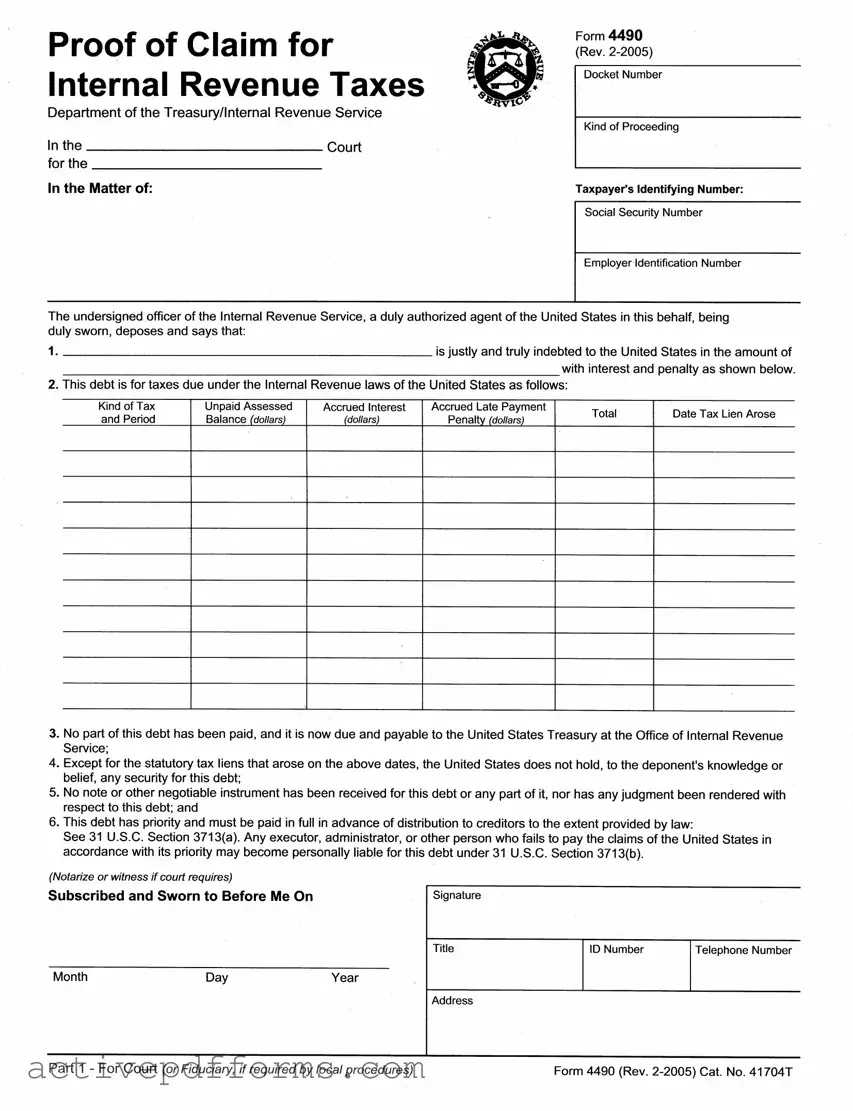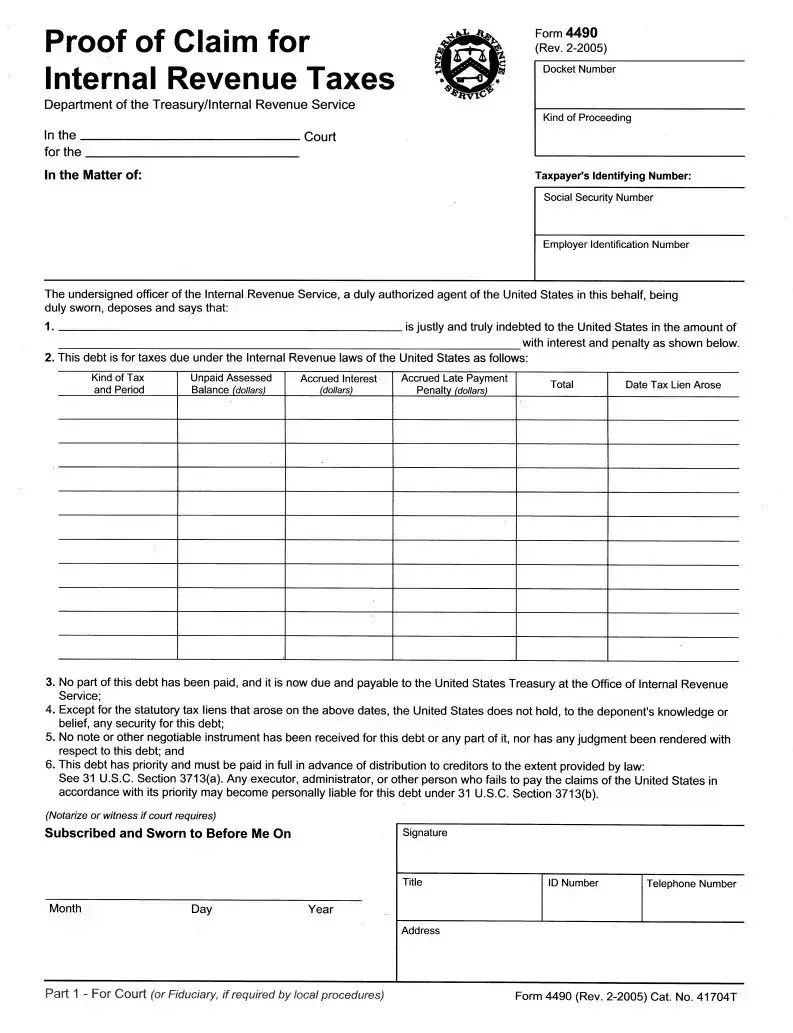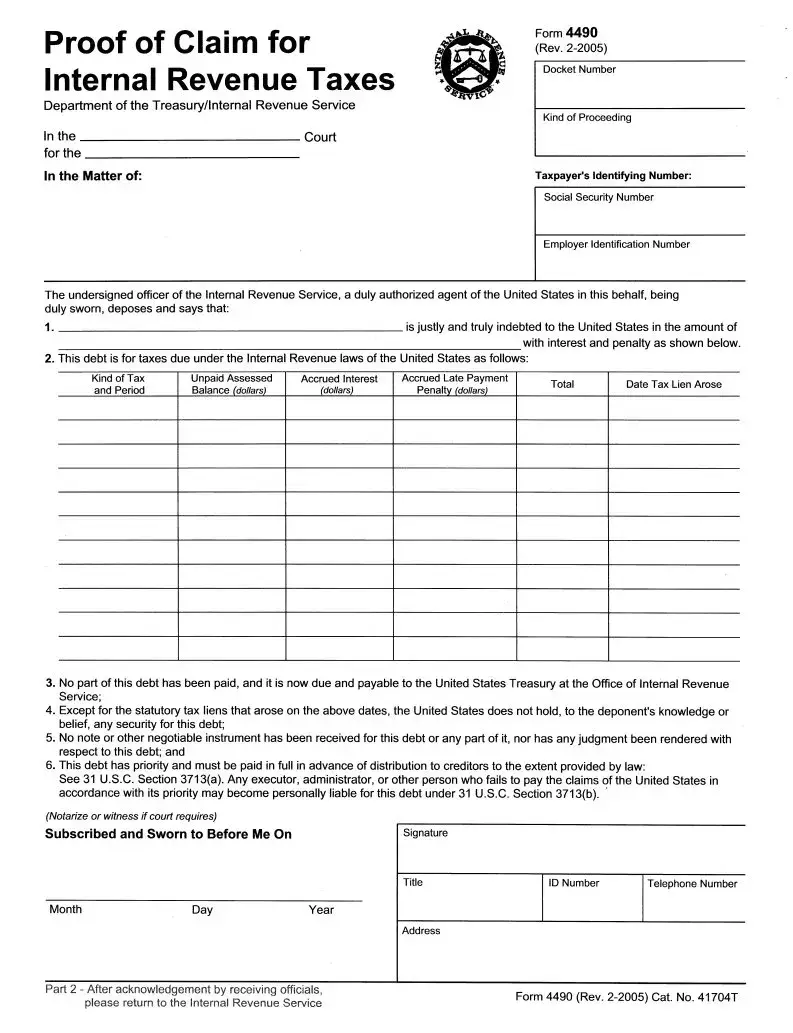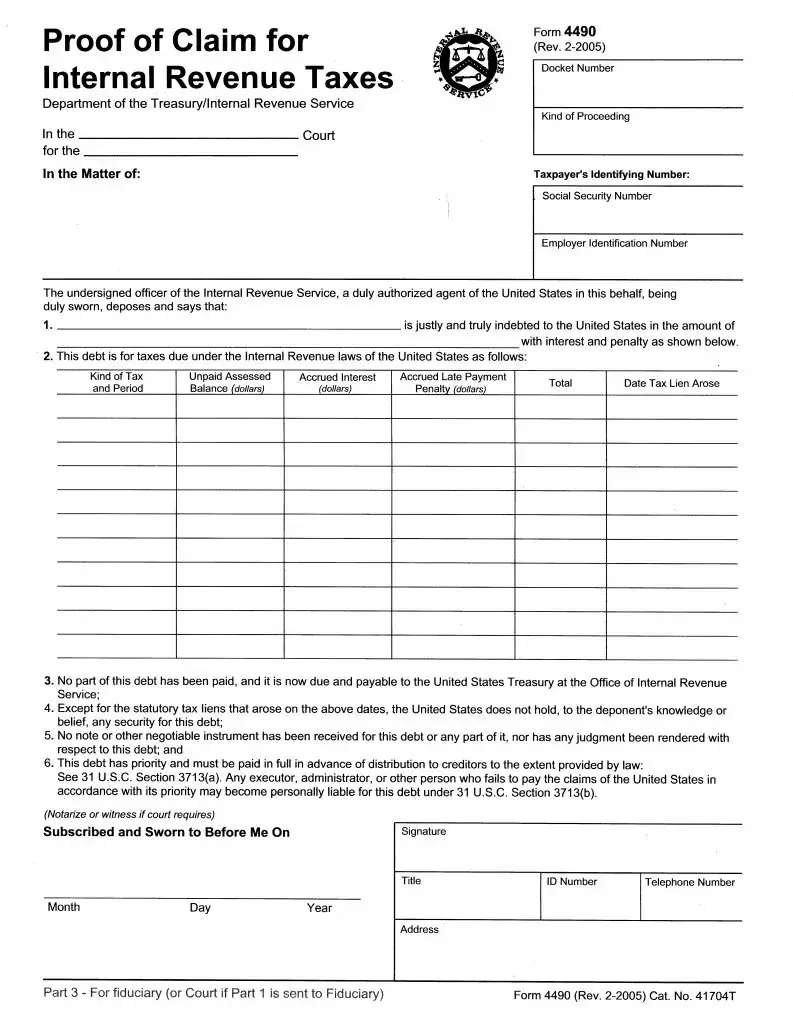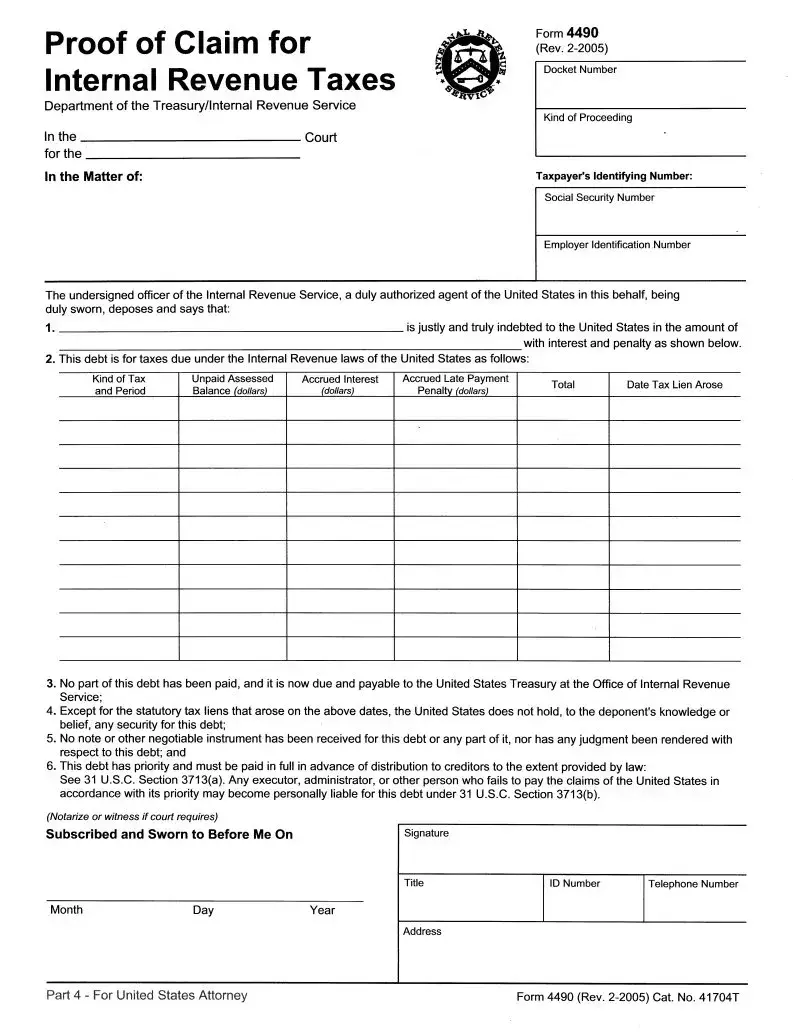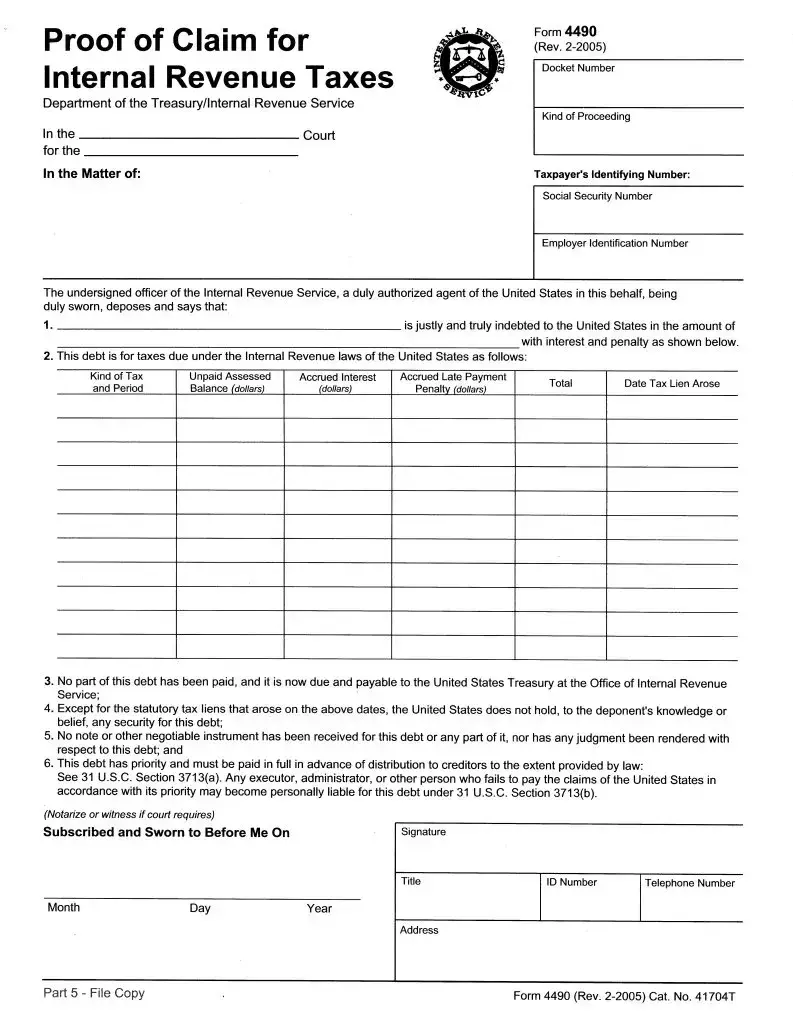Free 4490 PDF Template
The Form 4490, officially known as the Proof of Claim for Internal Revenue Taxes, serves as a formal declaration by the Internal Revenue Service (IRS), an entity of the Department of the Treasury. It is submitted to a court to assert the U.S. government's claim for unpaid taxes, inclusive of interest and penalties, by a debtor. This form outlines the debt amount, tax type, periods involved, accrued interests, penalties, and the priority status of the claim, emphasizing the legal requirement for its full settlement before any distributions to other creditors, in accordance with 31 U.S.C. Section 3713(a).
Edit 4490 Now
